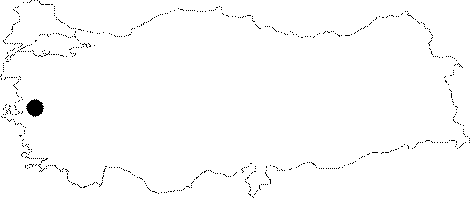|
©The Archaeological Settlements of Turkey - TAY Project
|
|
|
|
|
|
Arpali 2 |
|
|
For site maps and drawings please click on the picture...  |
For photographs please click on the photo...  |
|
Type:
|
Mound |
|
Altitude:
|
100 m |
|
Region:
|
Aegean |
|
Province:
|
Manisa |
|
District:
|
Saruhanli |
|
Village:
|
Burhaniye |
|
Investigation Method:
|
Survey |
|
Period:
|
Ceramic |
|
|
|
 |
|
| Location: This site is northeast of the city of Manisa and the town of Halitpasa. It lies 2 km south of the village of Burhaniye (Arpali); which used to be known as Arpali. It is possible to get to the mound via the Manisa-Akhisar highway. |
| Geography and Environment: There are two Arpali mounds lying side by side on a plain. The dimension of the northern mound is 50 m and its height is 1 m while the larger southern mound is 3 m high and has an 80 m diameter. Both mounds and the surrounding regions have been plowed and are currently under cultivation. There are no water sources nearby. |
| History: |
| Research and Excavation: The site was discovered in 1959 by D.H. French during his survey of the prehistoric settlements in northeastern Anatolia. It was surveyed by E. Akdeniz et al. in 2007 but only stone and chipped stone tools were found on the surface [Akdeniz 2009:259]. |
| Stratigraphy: In addition to Ceramic Neolithic habitation; evidence for Chalcolithic and Early Bronze Age settlement of the mound was found. The survey was not systematic; and it has not been determined from which part of the site material for each period was collected. |
| Small Finds: Pottery: D.H. French collected examples of slightly burnished ware which he assigns to the Late Neolithic Period. The drawings of these sherds have not been published. The paste of the ware is reported to be chaff tempered; while the surface is coated often with red and sometimes with gray or black slip. |
| Remains: |
| Interpretation and Dating: French dates this ware to the sixth millennium BC and believes it is contemporaneous with Hacilar IX-VI ceramics [French 1969: table in fig 3]. The site has; therefore; been assigned to the Late Neolithic Period. |